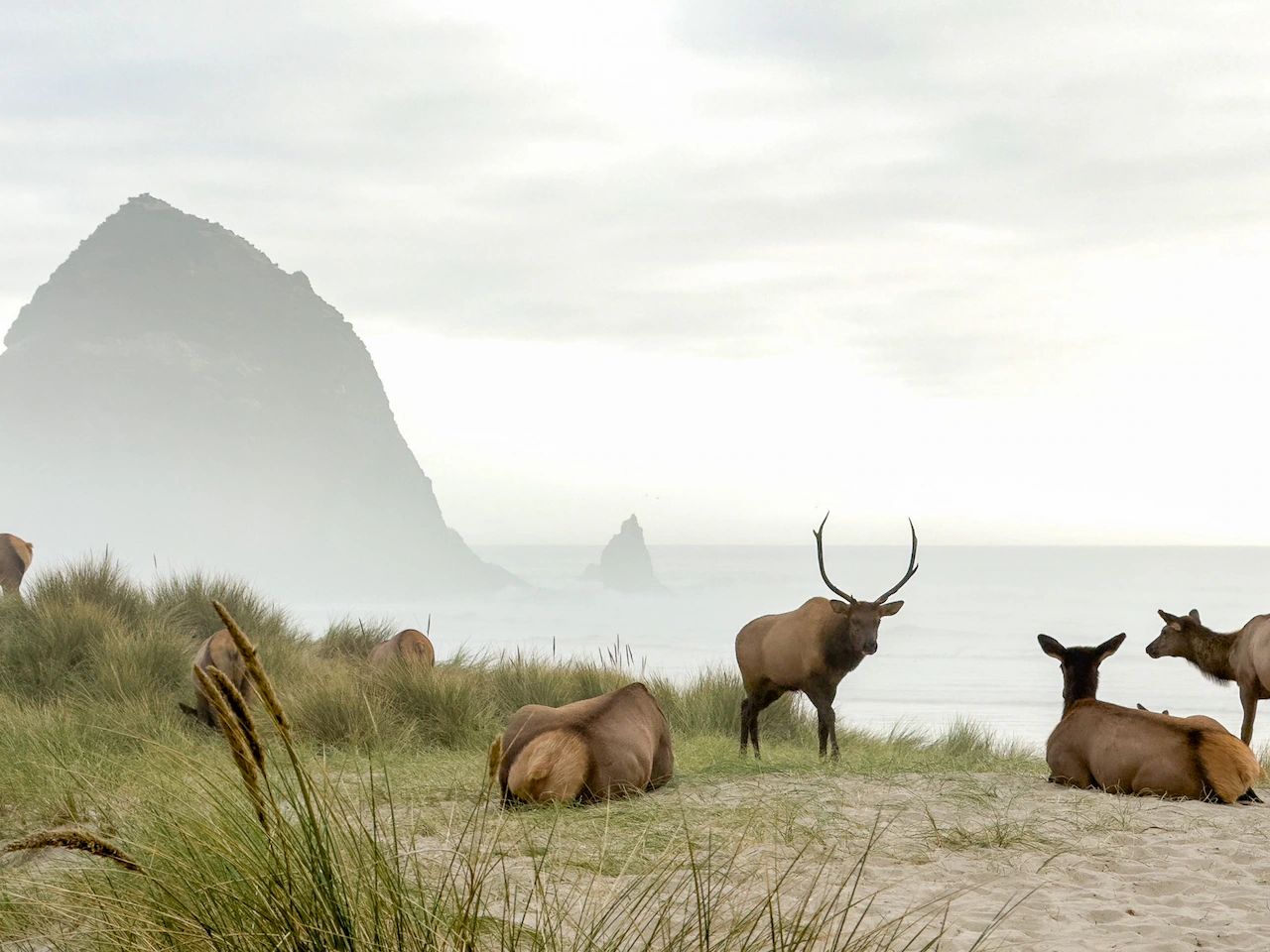
Earlier this month, on a whim, Desirea Pierce, 31, and her husband, Andres Sauseda, 32, left Apache Junction, Arizona, for a new adventure in Oregon. They’d never been and didn’t know a soul. Pierce had seen photos of elk on the shore in the Oregon Coast Experience Facebook group and wanted to see them for herself.
On the day the couple arrived — Sept. 12 at about 6:20 p.m. — she got her wish. Just north of Haystack Rock, near West Jackson and Monroe streets in Cannon Beach, the couple found a herd bedded down together, resting in the dunes with the ocean at their backs.
“We could not believe it. We were just, like, so shocked. It was crazy,” Pierce said.
The couple was so impressed with Oregon they’re already planning to return Oct. 9 with their two children, ages 9 and 12. They hope to explore Oregon’s waterfalls.
Photos of elk on the beach with Haystack Rock in the background are not uncommon. You’ve probably seen them before on Facebook or Instagram. That’s because Roosevelt elk, the subspecies found west of the Cascades and along the Oregon coast, are in their September to October mating season. Bulls bugle — a high, whistle-like mating call — shadow cows and chase rivals, often pulling herds into open spaces where they’re easier to see.
Pierce said the behavior was unmistakable: “(The bull elk) kept following around all the females, you know what I mean, smelling them, trying to actually mount on one of them.”
Another reason sightings spike this time of year: more people are on the coast during mating season, and nearly everyone has a camera.
The best viewing, though, stretches into the colder months. From October through April, Roosevelt elk settle into lowland meadows, wetlands and fields along the coast, where food is easier to find than in the Coast Range. Herds are larger, more concentrated and more predictable. Elk are Oregon’s largest land mammals — big bulls can top 1,000 pounds, twice the weight of a large black bear.
Oregon is home to two elk species: Roosevelt elk, the giants of the Coast Range and west-side forests, and Rocky Mountain elk, which roam east of the Cascades. That makes Oregon one of the few states where people can see both.
Where to look (dawn and dusk are best):
Open fields between Fort Clatsop and the Astoria airport
Along U.S. 101 between south Seaside and the entrance to Oregon 26
Jewell Meadows Wildlife Area (Oregon Department of Fish and Wildlife)
Dean Creek Elk Viewing Area near Reedsport, where 60–100 elk are often visible in meadows most winter and spring days
Sources: Oregon Department of Fish and Wildlife; National Park Service; Oregon Coast Visitors Association; Travel Oregon.
— Photos courtesy of Desirea Pierce
— Mark Graves, The Oregonian | mgraves@oregonian.com



